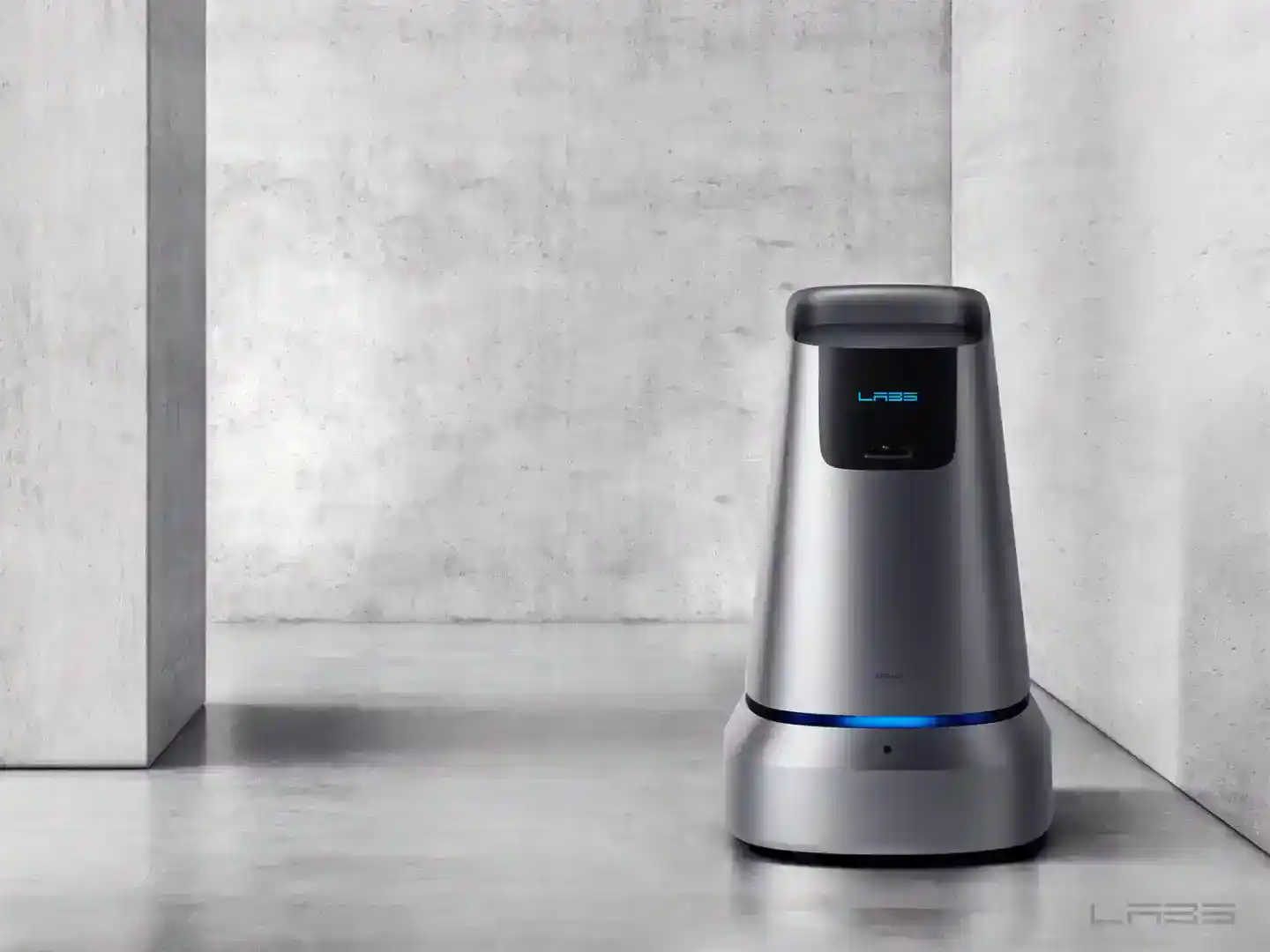Table of Contents
Imagine a robot that can fetch you a coffee, deliver your lunch, or carry your parcels. That’s the reality for the employees of Naver, South Korea’s biggest internet company, who work in a 36-storey building that is one of the first examples of a robot-friendly building.
Naver has been experimenting with integrating service robots into office life for more than a year, using its cutting-edge 5G-based cloud robotics technology. The cloud system enables the robots to see, recognize and operate seamlessly, without the need for advanced processors and navigation tools.
The robots, called Rookies, are about 100 in number and roam around the building on wheels, rolling through security gates and taking lifts. They can perform simple tasks such as delivering meals and parcels, and also test the boundaries of human interaction with machines.
Naver’s cloud robotics system: beyond the office
Naver’s cloud robotics system is not only limited to its offices, but also extends to other domains such as industrial and server robots. The company has opened Asia’s largest data centre in Sejong City, where multiple robots carry heavy servers between IT warehouses and server rooms, while self-driving shuttles transport employees and visitors to the campus.
Naver’s cloud robotics system is powered by its “digital twin” technology, which is a 3D scan of cities and buildings that helps the robots to recognise their surroundings and find the most efficient routes. The company also develops
, robotics and autonomous driving at its research and development unit, Naver Labs, which spends about a quarter of its annual sales on R&D.
Naver’s cloud robotics system: a potential new export driver
Naver is now keen to export its cloud robotics technology, as it sees it as a potential new export driver for the country. Many countries in Europe, Japan and Saudi Arabia have expressed interest in benchmarking its system, according to Seok Sang-ok, chief executive of Naver Labs.
“There are not many companies globally who can offer this high-quality robot service at this scale,” Seok told the Financial Times. “This requires a lot of seamless co-operation with many of our affiliates. Naver’s wide-ranging services, including search engines, online shopping and social networking, have allowed us to experiment with various robot technologies and services, all in-house.”
Seok said that the company had collected a lot of data on human interaction with robots, and that it would focus on exporting IT services, as he believed that its robotics technology using the cloud would become much better in two to three years.
However, Naver also faces some challenges in exporting its cloud robotics system, as it involves a complex combination of technologies that is not as easy as “selling just a fleet of robots”, according to Park Sang-soo, a researcher at the Korea Institute for Industrial Economics and Trade.
“Naver’s robots are working well in its offices because the building was designed for that purpose, but it should consider the non-technological factors of the target countries such as their IT infrastructure and regulation to sell its platform solution,” Park said.
Naver’s cloud robotics system: a reflection of South Korea’s robot industry

South Korea has a thriving domestic robot industry, mostly deployed in factories, as the country sees AI and robots as key to alleviating labour shortages in the face of the world’s lowest birth rate. According to the International Federation of Robotics, South Korea has the highest “robot density” in the world, with 1,000 industrial robots per 10,000 manufacturing employees, compared with 399 in Japan, 322 in China, and 274 in the US.
Robots are also becoming an increasingly visible part of day-to-day life in South Korea, where sales of service robots are expected to almost double from $530mn this year to $1bn in 2026, an average annual increase of 23 per cent, according to the Korea Institute of Science and Technology Information.
Naver’s cloud robotics system: a challenge to South Korea’s software weakness
Despite being a technology powerhouse, South Korea remains weak in software development, with its tech exports mostly confined to hardware such as chips, electronics and electric vehicle batteries. Naver is trying to change that picture, with exports of IT services like digital twins, robotics and AI tools, although it has so far failed to gain a foothold abroad with its powerful search engine.
Earlier this year, the country won its first major high-tech export contract to the Middle East to build and operate digital twins or virtual versions of five cities including Riyadh, Medina and Mecca, for five years. It is also looking to offer tailored versions of its latest ChatGPT-like artificial intelligence model to foreign governments concerned about US data controls.
“We are just beginning to export our IT services, which can become the country’s new export driver,” said Seok. “We aim to become the leading exporter of the country’s IT services in the medium to long term.”